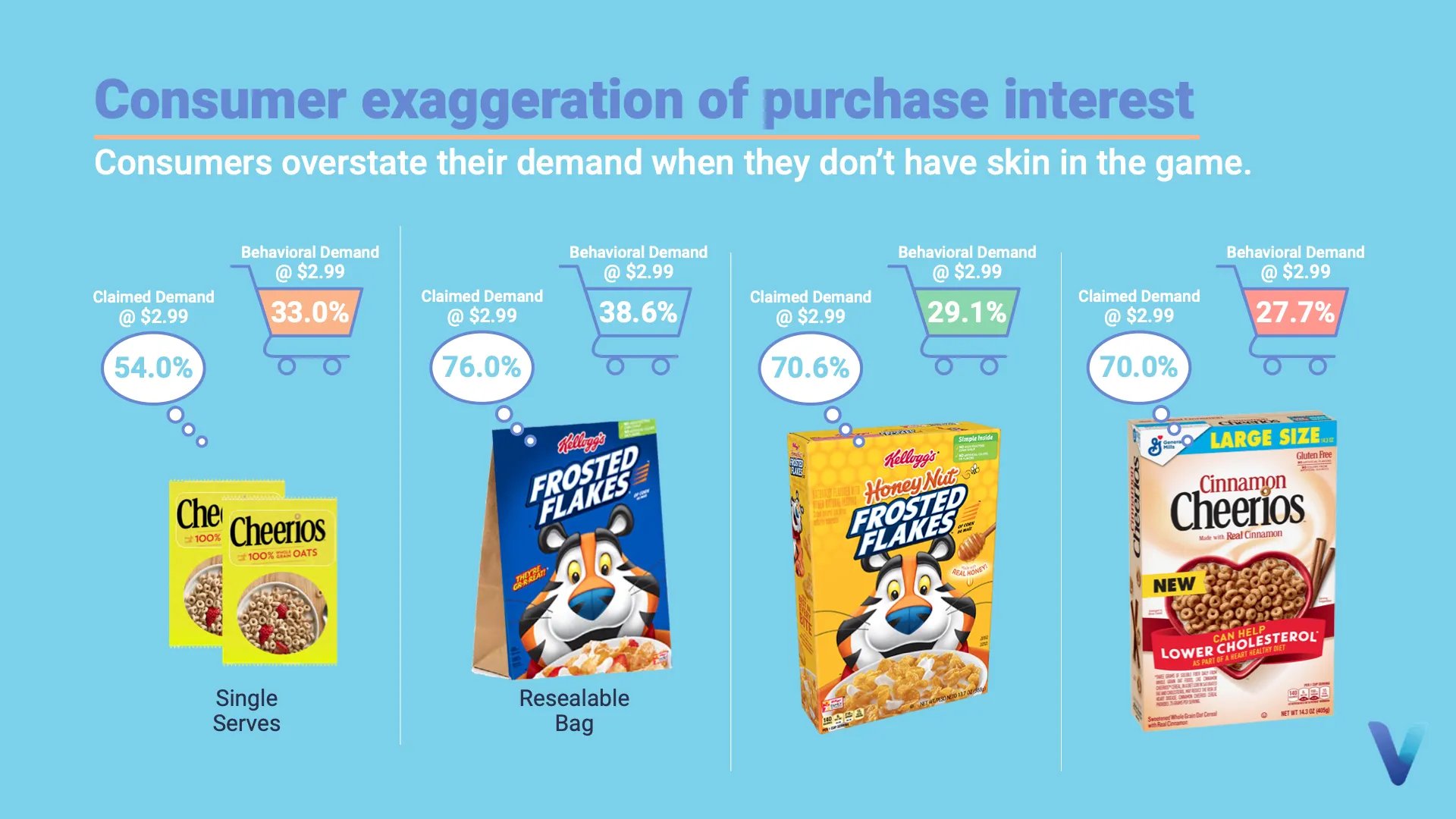How Big is the Gap Between What Consumers Say and Do?

Reliable consumer insights are essential for businesses to make informed product decisions. Consumer goods companies are faced with tremendous pressure to launch successful innovations, and with consumers often tempted to overstate their interest in products, traditional methods of market research are not well-equipped to optimize the success of innovation investments.
In most market research situations, there is a significant difference between what consumers say they would do and what they actually do. Veylinx recently conducted research that sought to measure this gap between claimed and actual behavior. The results are eye-opening, and they confirm the value of behavioral insights in measuring consumers’ true wants and needs.
How do we measure actual behavior accurately?
Unlike typical surveys in which consumers are asked about their claimed preferences, Veylinx predicts how much they will pay for a product through a proprietary bidding platform using the participants’ own money. Participants in a Veylinx study reveal what an item is truly worth to them by placing a sealed bid on the product being tested. This method raises the stakes for participants to be honest and accurate, as there is no incentive to bid higher or lower than their maximum willingness to pay (WTP).
We often get asked about the extent to which claimed behavior and actual behavior differ, so we decided to conduct a study to measure this gap and illustrate just how important it is to measure real behavior. For this purpose, we tested a selection of both existing SKUs and innovations. We ran parallel studies — one “behavioral” and one “traditional” — with the only difference being the methodology used to determine WTP. In the behavioral study, consumers participated in a real purchasing scenario facilitated by the Veylinx platform and methodology. In other words, they were exposed to the actual consequences of their claims. In the traditional study, consumers were asked to indicate if they were interested in the product and what they would be willing to pay for it without actually having skin in the game.
We discovered a substantial difference in purchase interest and overall demand between the two methods. For one of the existing SKUs we tested, 83 percent of respondents in the traditional study claimed that they would be interested in purchasing the item. However, only 42 percent of participants in the behavioral study actually placed a positive bid — a difference of 98 percent. For the product for which we observed the smallest contrast between claimed and actual behavior, the difference was still 62 percent. On average, the difference between claimed interest (i.e., the survey) and actual behavior was over 81 percent.
These results confirm the great discrepancy between traditional survey data and actual consumer behavior. This gap between what consumers say and what they do is one reason why so many product innovations fail. Veylinx’s unique approach helps close this gap by revealing what consumers truly desire and how much they are willing to pay for it so that companies can make better-informed decisions when they screen ideas, test concepts, set prices, and launch product innovations.
Tags:
June 2, 2022


Comments